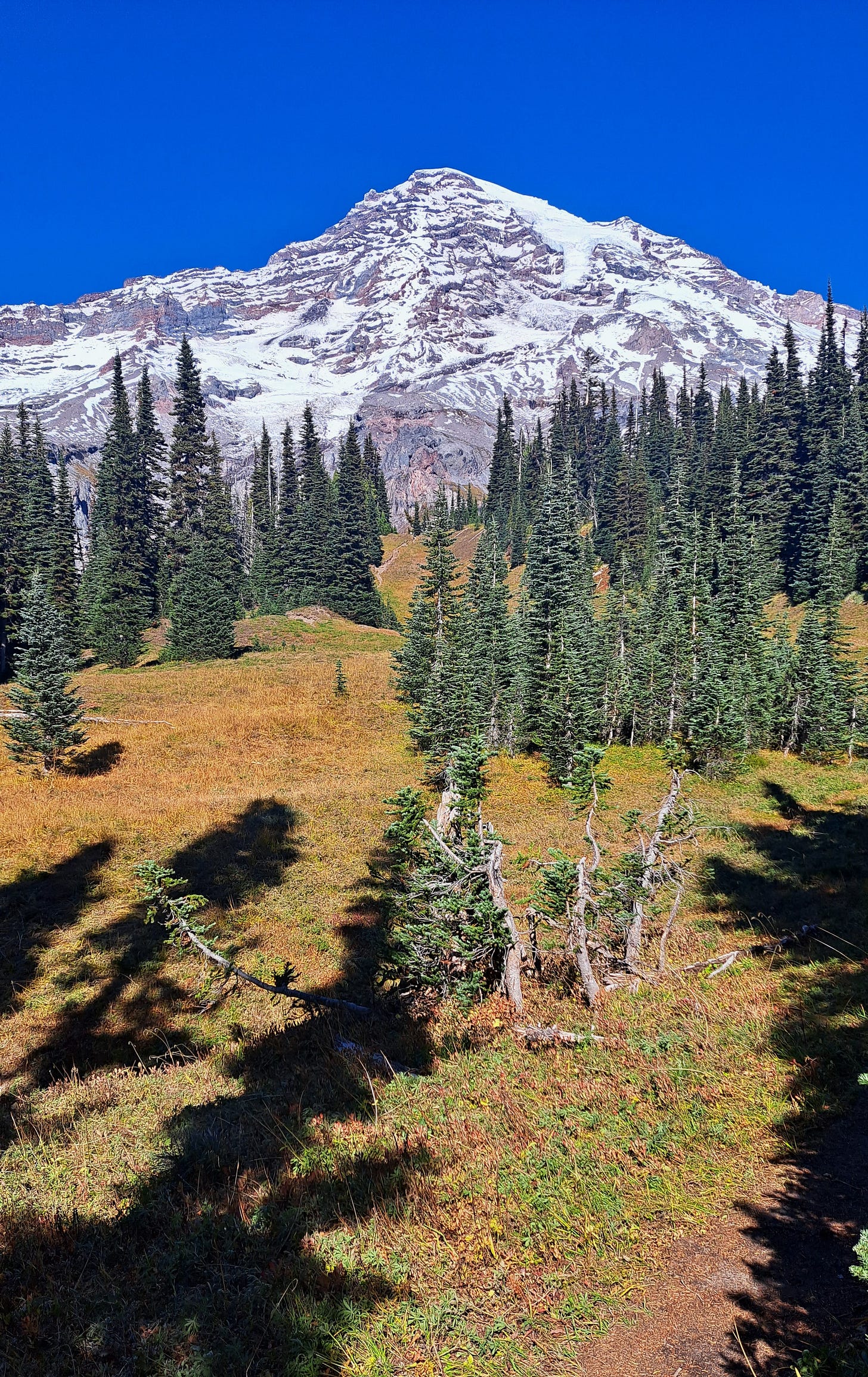In January 2011, well into the throws of the Great Recession, I accepted a job offer in Washington, D.C., as an outdoor recreation planner with a federal energy agency. Yes, it’s a thing. (Think hydroelectric power projects with campgrounds, trails, boat marinas, etc.) The new job meant that Kris and I would be making a big, cross-country move from Washington-the-State to Washington-the-District. It was either that, or stay in our beloved Bellingham twirling a pizza sign on some damp street corner.
As a long-time Washingtonian, leaving Washington for “the other Washington” raised, among other things, some trivial curiosities of nomenclature. The two Washingtons, of course, are rooted in the same genetic source material, el numero uno presidente of these United States, none other than the cherry tree guy and revolutionary hero, George. So, in a sense, Washington = Washington. One's a state, the other a district. The naming convention isn't complicated. It’s for the same guy—though it almost wasn’t.
Curiously, the state of Washington might very well have been called the state of Columbia. In 1852, the same year that the Arthur Denny party, Doc Maynard and others established the town of Seattle at Pioneer Square, a new territory was proposed to be carved from the northern half of the Oregon Territory, itself christened by Congress only four years earlier. A movement was afoot to name this new territory “Columbia.” Had the name stuck, actual statehood 37 years later might well have retained the moniker. I’d now be writing about “the other Columbia” instead.
Coincidentally, the campaign for a new territory transpired at precisely the same time that the son of a black slave named George Washington settled along the Skookumchuck River in said territory. (The Skookumchuck, literally “powerful water” or rapids, flows into the Chehalis River about 40 miles north of the Columbia River.) With his wife Mary, civic-minded George later donated a portion of his land for parks, a church and a cemetery in the city he founded there, Centerville, later renamed Centralia. George is buried in the same cemetery, though his memory lives on at George Washington Park in the center of town.
By 1853, Congress agreed to establish the bustling new territory, and many presumed it would be named Columbia. But a Kentucky Congressman and slaveholder, Richard Stanton, interceded, insisting on the name of our popular first president, who of course was also a slaveholder. And so it would be: Washington Territory. Nevermind the countless Native American settlements that had already existed here for millennia.
It’s worth noting that George Washington of Washington was prohibited from owning land in Oregon, due to racist laws on the books at the time. The new Washington Territory, however, had no problem with Mr. Washington owning a piece of Washington. To many natives, on the other hand, owning the land seemed an almost laughable proposition, like owning the wind in the mountains or the waves on the sea.
Moving on, a goodly chunk of the remaining Oregon Territory achieved statehood in 1859. Over the next three decades, promoters in Washington Territory pursued a similar dream. Some recalled the earlier Stanton foible and insisted the new state be called Columbia. Others suggested the State of Tacoma had a special ring to it as well. It at least recognized that others were here first. Tacoma (or Tahoma), the “mother of waters” (think snow and ice) was the indigenous name for Mount Rainier.
Some wanted no state at all, including many Democrats in Congress, who had agreed to statehood for Colorado in 1876, only to see its three electoral college votes in the presidential election later that year cast for Republican Rutherford B. Hayes, thereby turning the outcome of one of the most controversial elections in U.S. history. Democrat Samuel Tilden, who won the popular vote by a solid margin (51-48), would have otherwise become president. It was the only time in U.S. history that a candidate won more than fifty percent of the vote, yet lost the presidency in the Electoral College. The wounds would eventually heal, and in 1889 the spirit of George would be forever emblazoned upon the nation's 42nd state.
Watch for PART 2—Columbia, Meet Columbia. I’ll be posting it soon.



Thank you for telling history the way it happened. Mount Sefrit has yet to be renamed.